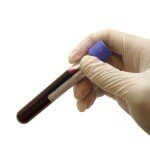Are you interested in pursuing a career in a robust recession-proof field that does not require exhaustive education and clinical training? You may want to consider a career in phlebotomy, which can be very rewarding and fulfilling. A phlebotomist is responsible for drawing and analyzing blood samples from patients or donors by means of scientific analysis. If you possess great dexterity, genuinely enjoy the opportunity to help others and work well under pressure situation, you may be ideally suited to work in phlebotomy. While you will not need exhaustive and time-consuming training to become a phlebotomist, you should expect to complete a training program that typically lasts between one semester and one year. After all, working in phlebotomy involves much more than just taking blood from patients. You will need to know the techniques involved in analyzing blood samples as well as proper safety protocols.
 In order to receive financial aid for phlebotomy training, the first item on your checklist must be to complete the Free Application for Federal Student Aid (FAFSA). You must do some research and find independent scholarships you can apply to in order to receive some financial assistance as well. For example, the American Society for Clinical Pathology offers scholarship opportunities to aspiring phlebotomists based on educational goals. Other organizations offer general scholarships to individuals pursuing training for work in any part of the health care industry. Aid is often given on a first-come, first-serve basis and so it is absolutely vital that you are aware of all deadlines and submit your application material well in advance of deadlines.
In order to receive financial aid for phlebotomy training, the first item on your checklist must be to complete the Free Application for Federal Student Aid (FAFSA). You must do some research and find independent scholarships you can apply to in order to receive some financial assistance as well. For example, the American Society for Clinical Pathology offers scholarship opportunities to aspiring phlebotomists based on educational goals. Other organizations offer general scholarships to individuals pursuing training for work in any part of the health care industry. Aid is often given on a first-come, first-serve basis and so it is absolutely vital that you are aware of all deadlines and submit your application material well in advance of deadlines.
If you want to minimize the cost of your phlebotomy training, it is important to research and compare the costs involved in various training programs. You may even want to consider potential online educational training programs for phlebotomy. While you will obviously have to complete hands-on training in a hospital or lab setting, you may be able to replace classroom education with online education, which can definitely save you some money.
If you have decided to pursue a career in phlebotomy, you should feel confident knowing that you are entering a profession in the health care industry that is in high demand and directly involved in helping others. It would be in your best interest to seek financial assistance by completing the FAFSA form and applying to independent scholarships. It is absolutely essential that you submit all your application material well in advance of posted deadlines. If you want to further minimize the cost of phlebotomy training, do some research on the cost of various programs and consider completing some portions of your training through online courses.







